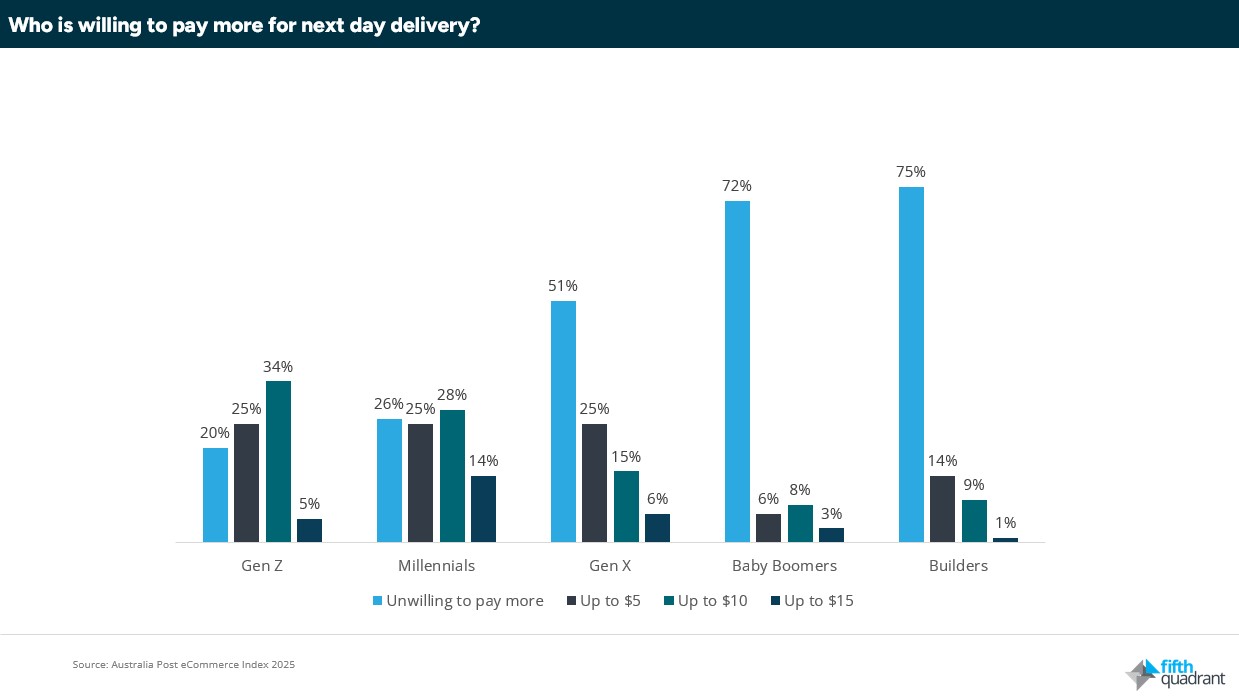Author: Kat Noyes | Posted On: 01 May 2025
Delivery is no longer just the final step of the eCommerce journey, it’s the moment that defines how customers remember the experience, shaping satisfaction and loyalty.
Insights from the 2025 Australia Post eCommerce Report, highlight how delivery plays a central role in shaping the online shopping experience. While great products, competitive pricing and a seamless checkout attract customers, the delivery can often define how the journey is remembered. Unlike most of the shopping journey, the delivery is often the only touchpoint by a third-party provider, yet if something goes wrong the brand will be blamed.
The behavioural science concept of the Peak-End rule demonstrates that people judge experiences largely by how they felt at the most emotional moment and how it ends. In eCommerce, delivery is that final moment, shaping whether the experience leaves a lasting positive impression and if customers choose to come back.
Delivery on their terms
Today’s shoppers expect control over when and how they receive deliveries. Speed remains critical even for an extra fee, with 34% of Gen Z and 28% of Millennials willing to pay up to $10 for next-day.

Large marketplaces have recognised that delivery is the end game, and they’ve invested heavily to own that final moment. With large marketplaces responsible for 39% of total online spend growth in 2024, their dominance is clear. Amazon, in particular, has redefined expectations through its vast fulfilment network, using scale, automation and logistics precision to make fast and reliable delivery a core part of their value proposition. Their scale gives them an advantage, allowing them to offer the speed that smaller retailers often can’t match.
But that doesn’t mean other retailers are out of options. Recent research shows that many shoppers are open to delayed delivery when it’s tied to a cause. Whether it’s a charitable donation or an environmental benefit, customers are willing to wait if they understand the why, especially for non-essential items. Slower delivery, framed meaningfully to empower consumers with control, can ease delivery speed pressure and build stronger brand affinity. For smaller retailers this is a powerful opportunity to make delivery an intentional part of your brand, not just a race for speed.
The final touchpoint: why delivery can make or break trust
With the eCommerce journey ending with the delivery, it potentially leaves businesses exposed to elements that are outside of their control, and can unravel so much of the hard work that came before. Majority of shoppers (85%) say a reliable delivery experience will be the most important factor in trusting an online retailer over the next five years, showing the importance of choosing a delivery partner businesses can trust and who aligns with their values.
Outside of this, businesses need to look at what they can do to ensure the end of the experience doesn’t end with the delivery, whether that is a personalised messaging in the packaging, a surprise element, or active post-sales communication. Implementing the core concept of Peak-End rule within the customer journey, through strategic placement of positive emotional peaks, can help improve perceptions and fundamentally enhance overall satisfaction.
Compete on what matters most
Looking ahead, innovation in delivery will only accelerate. With drone delivery trials underway in global markets, the near future lies in localised fulfilment, real-time tracking, and predictive ETAs. With AI and automation streamlining logistics, consumers will expect even more control and convenience.
Let’s talk about what your customers want
At Fifth Quadrant, we help brands explore what really drives customer decisions that shape the customer experience.
Want to know how your offering stacks up against customer expectations? Get in contact or explore our consumer and retail market research.
Posted in Uncategorized, CJM, Consumer & Retail

